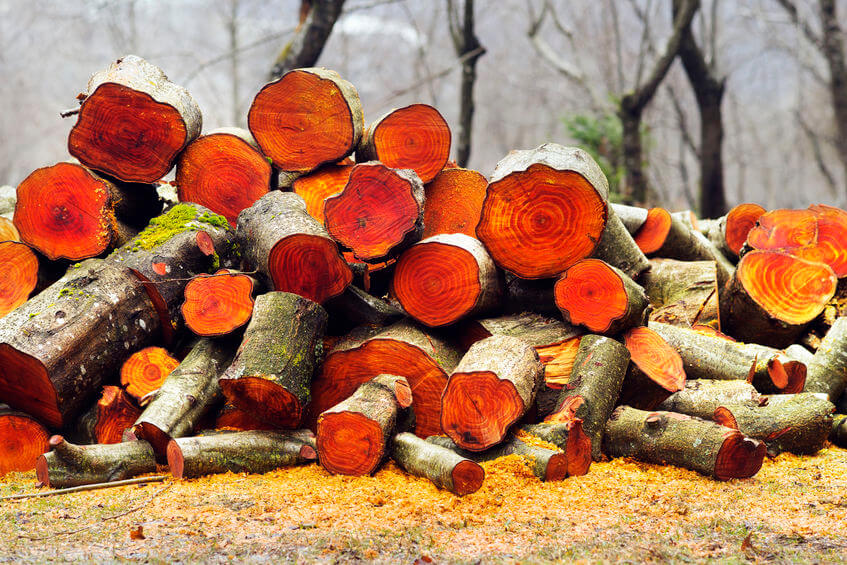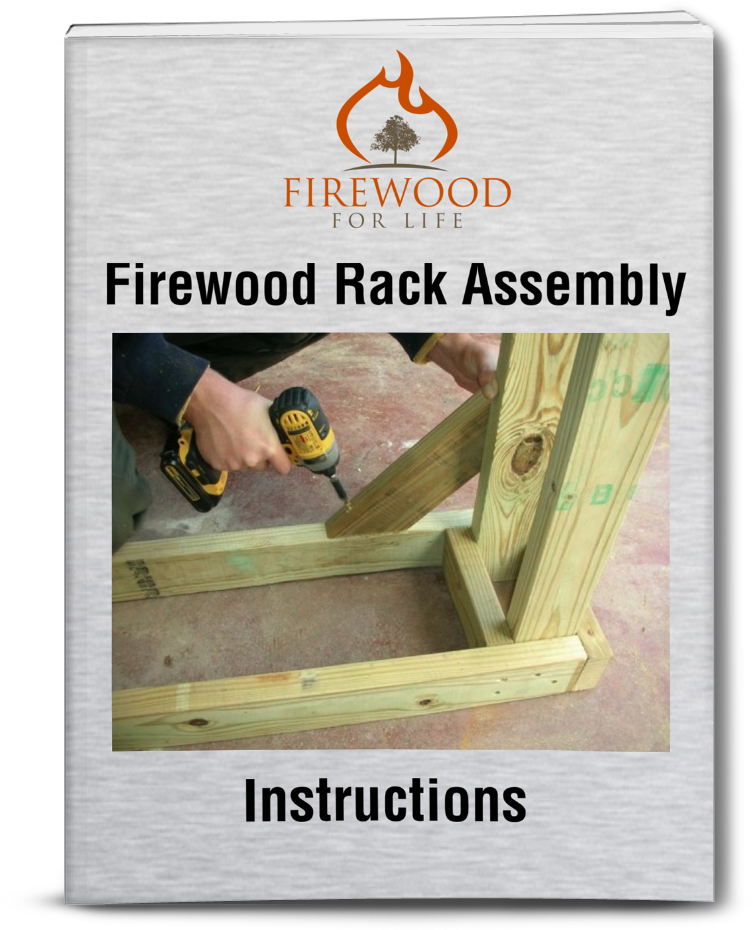- Home
- Chainsaw Maintenance
Chainsaw Maintenance
This post may contain affiliate links so I earn a commission.
Chainsaw maintenance plays an vital role in a properly running chainsaw.
After all, you've spent hundreds of dollars on a saw you expect to run when you need it most, but without proper care no small engine will run at its optimal performance.
However, even with the best maintenance things are bound to break over time just due to normal use.
So, we've created this easy to follow guide to keep your chainsaw running like new no matter what problems you may face.
Do you have chain that's too loose or too tight?
What do you do if your chain won't stop when you let off the gas?
Is your chain dull and not pulling itself through the wood?
These are all common things you'll encounter when cutting firewood.
How Long Will A Chainsaw Last?
Every chainsaw is different no matter how much chainsaw maintenance you do.
I've used Craftsman chainsaws that have lasted 2 years and Husqvarna chainsaws that are on their 15th year and still running like new.
You should always refer to your specific chainsaw maintenance recommendations that are set by the saws manufacturer, but generally speaking, a vast majority of maintenance is universal.
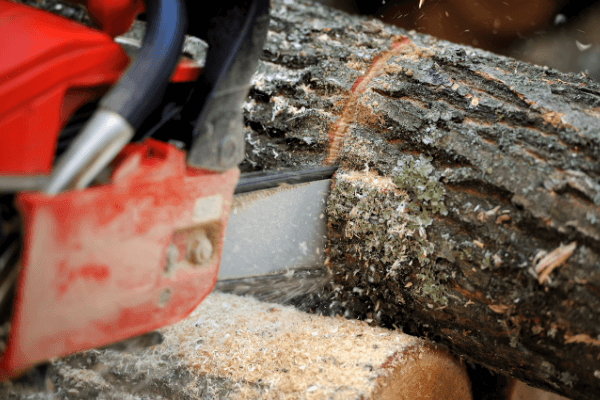
By doing regular maintenance on your saw you find that it lasts longer and runs better which ultimately makes it safer to use.
Have you ever had a saw that stalls out or have you tried to muscle the saw through the wood because the chain was dull?
These are common problems that can be avoided with daily chainsaw maintenance.
This especially applies to beginners who are just learning how to start a chainsaw.
You want to learn on a saw that idles on its own without having to feather the gas and you want the sharp teeth on the saw to do the work for you.
Even the best gas chainsaws won't run if you don't properly take care of them.
Everyone, including myself is guilty of forgetting to properly clean a chainsaw before each use.
Sometimes you're in a hurry or just don't want to spend the time going through the saw and making sure everything is right.
So I've created an easy to follow list to properly maintain your chainsaw and keep it running like new.
Chainsaw Maintenance Guide
Follow the chainsaw maintenance checklist below to keep your saw running at its optimum potential:
Daily Maintenance For Your Chainsaw
- Use a rag to wipe down the outside of your machine. Remove the top cover and clutch cover and set them aside.
- Use an air compressor to blow out debris from the engine compartment and other parts of the saw. I've found an air compressor works wonders for cleaning a chainsaw.
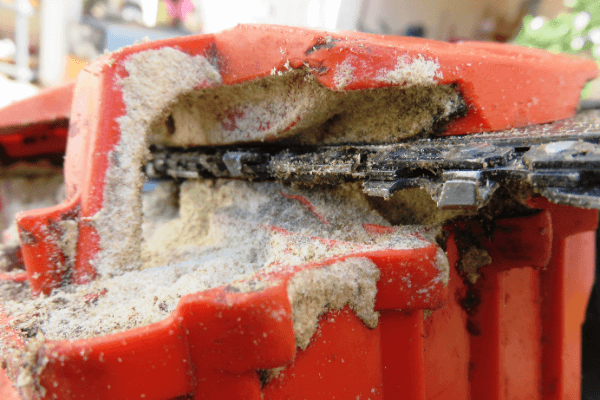
- Inspect the chain brake on the clutch cover. Use a small screwdriver to remove any large buildup then use compressed air to blow out any sawdust that has built up between the chain brake band and the cover. Remember to wear safety glasses!
- Check the lubrication hole in the bar and make sure it's open and clean.
- Check the bar grove and remove any debris inside of it. You'll be amazed how much "gunk" can build up inside the groove. They make a special tool to clean out the grove, but if you don't have one, a dental tool, piece of wood, or even a credit card works great for cleaning it out.
- Lubricate the sprocket on the tip of your bar. The bar will have two lubrication holes, one on each side. Pump grease into each side.
- Check the small wire that operates the stop switch. Sometimes the wire will back off and not allow the connection to stop the saw when you activate the switch.
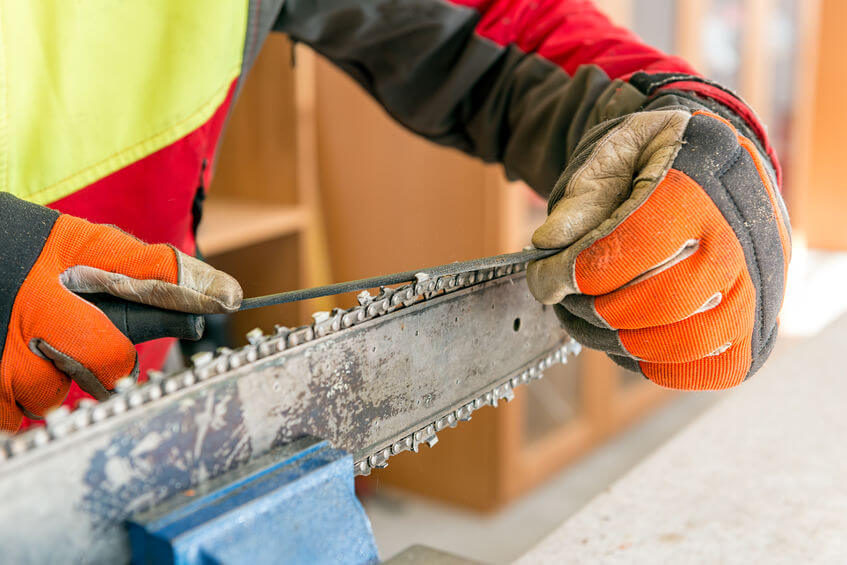
- Check your chain for sharpness. If it's dull, you can use a variety of different techniques to sharpen it. To learn more, check out this article that explains how to sharpen a chainsaw.
- Before reinstalling your bar, flip it. I like to flip my bar every time I sharpen the chain. It evenly wears the bar over time.
- Check the drive sprocket for excessive wear. Some sprockets will develop a grove inside the star sprocket. This is a sign that the sprocket will need to be replaced soon. When your chain is too tight, it will often wear out the sprocket prematurely.
- Remove the air filter and clean it as necessary. If you take the cover off the air filter you can wash it in soapy water to remove any greasy buildup. If there is just a little dust buildup, use an air compressor to blow out the dust. A dirty air filter will cause your saw to stall and not idle properly. If you're experiencing a saw that's stalling, check your air filter to see if it's clean.
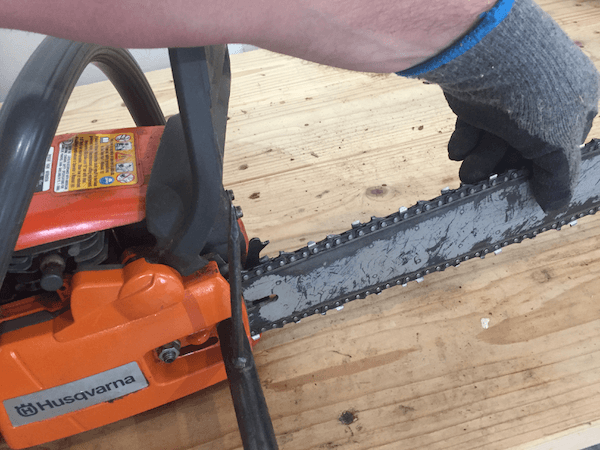
- Reinstall your chain. To properly tighten your chain, be sure to lift up on the tip of the bar before you tighten the clutch cover nuts. If you don't lift up on the tip of the bar, your chain will become loose after you use the saw for a few minutes. A properly adjusted chain is like a Goldilocks bowl of porridge....not too tight but not too loose.
- Still having issues with a saw that's not running or cutting correctly? Check out these tips to fix a chainsaw.
Weekly Chainsaw Maintenance
- Use a flat file to file down any burrs on your bar. Over time, you'll notice the bar tends to round off near the chain groove. Just lay the bar flat and use a file to knock down the burrs.
- Lubricate the clutch drum. In the middle of the clutch drum you'll see a hole. Use a grease gun with the proper applicator tip to squirt grease into the clutch drum.
- Clean out the cooling fins on the engine and impeller. An air compressor will make this job easier. Dirty cooling fins can cause an engine to overheat.
Manufacturers also recommend additional monthly steps such as checking the gas line for damage and leaks, checking the spark plug gap and flushing the gas tank to remove debris, however the steps listed above will prevent a vast majority of chainsaw issues.
If you're new to using a chainsaw and need some additional information, check out our chainsaw tips for beginners which will make you a wood cutting expert in no time!
Or if you're looking to purchase a new chainsaw, check out this article that details the best chainsaw for the money.
Sharpening A Chainsaw Chain
There's an old saying of "A dull tool is the most dangerous tool in the shop" and this applies to chainsaws as well.
When a chain becomes dull, the user typically applies more force to the saw to get the teeth to bite into the wood better which increases fatigue and the possibility of injury.
This also increases the possibility of chainsaw kickback, a dangerous event that accounts for a majority of chainsaw accidents.
You want the saw to do the work for you and basically pull itself through the wood.
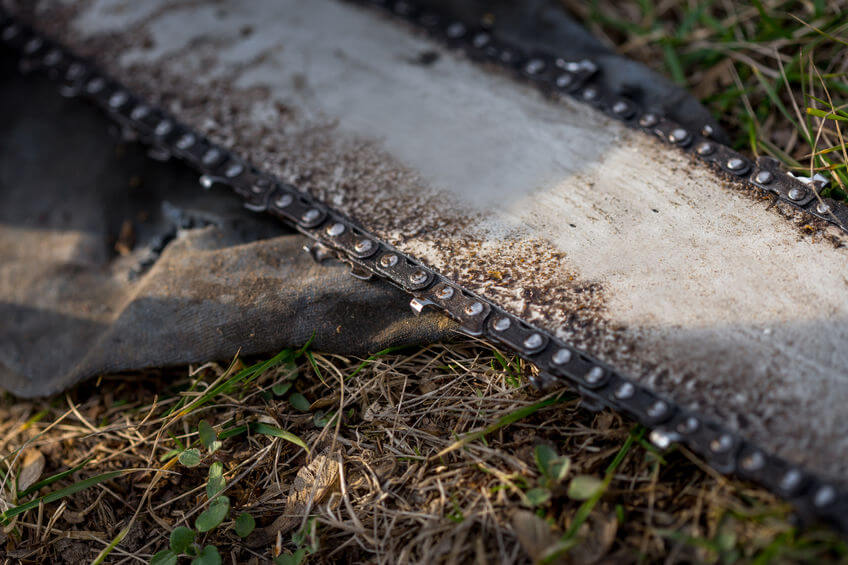
A good rule of thumb is to sharpen the chain (or touch it up) every time you fill the tank up with gas.
This may seem frequent, but it's a lot easier to keep a chain sharp if you're consistent with it.
Professionals will all agree using a hand file is the fastest and easiest way to sharpen a chain.
It's a quick chainsaw maintenance procedure that can easily be done out in the woods.
However, for the common homeowner that doesn't sharpen a chain everyday, it can be a difficult task.
Plus, with the large variety of chainsaw chain types, it's sometimes hard to know which angle or degree your chain requires, to be properly sharpened.
I'll admit, when I first started cutting firewood I was horrible at hand sharpening a chain.
I would buy 3-4 chains and just swap them out when they became dull.
Then, I'd take them all to the local hardware store and have them professionally sharpened.
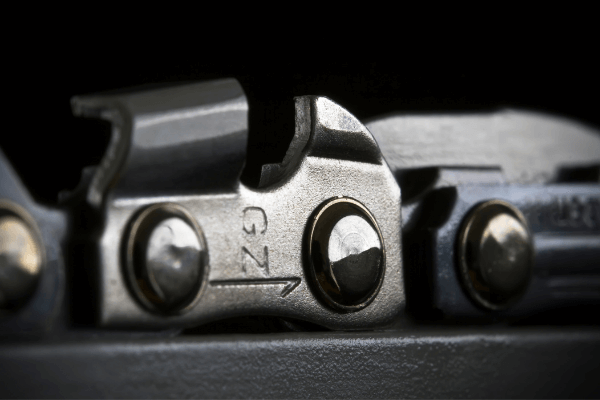
This worked great for a while, but it became expensive and time consuming so I invested in an electric chainsaw sharpener.
Since my budget was small I bought a Harbor Freight chainsaw sharpener.
It was actually pretty cheap and for the money it works great!
The Timberline chainsaw sharpener isn't electric but it offers a unique way to sharpen your chain. To learn more you can check out this article.
When it comes to professional quality, the Oregon chainsaw sharpener is the leader of the pack.
These bench mounted sharpeners are top quality and they produce amazing results.
I've sharpened hundreds of chains with these and they truly are amazing because they're so accurate and well made.
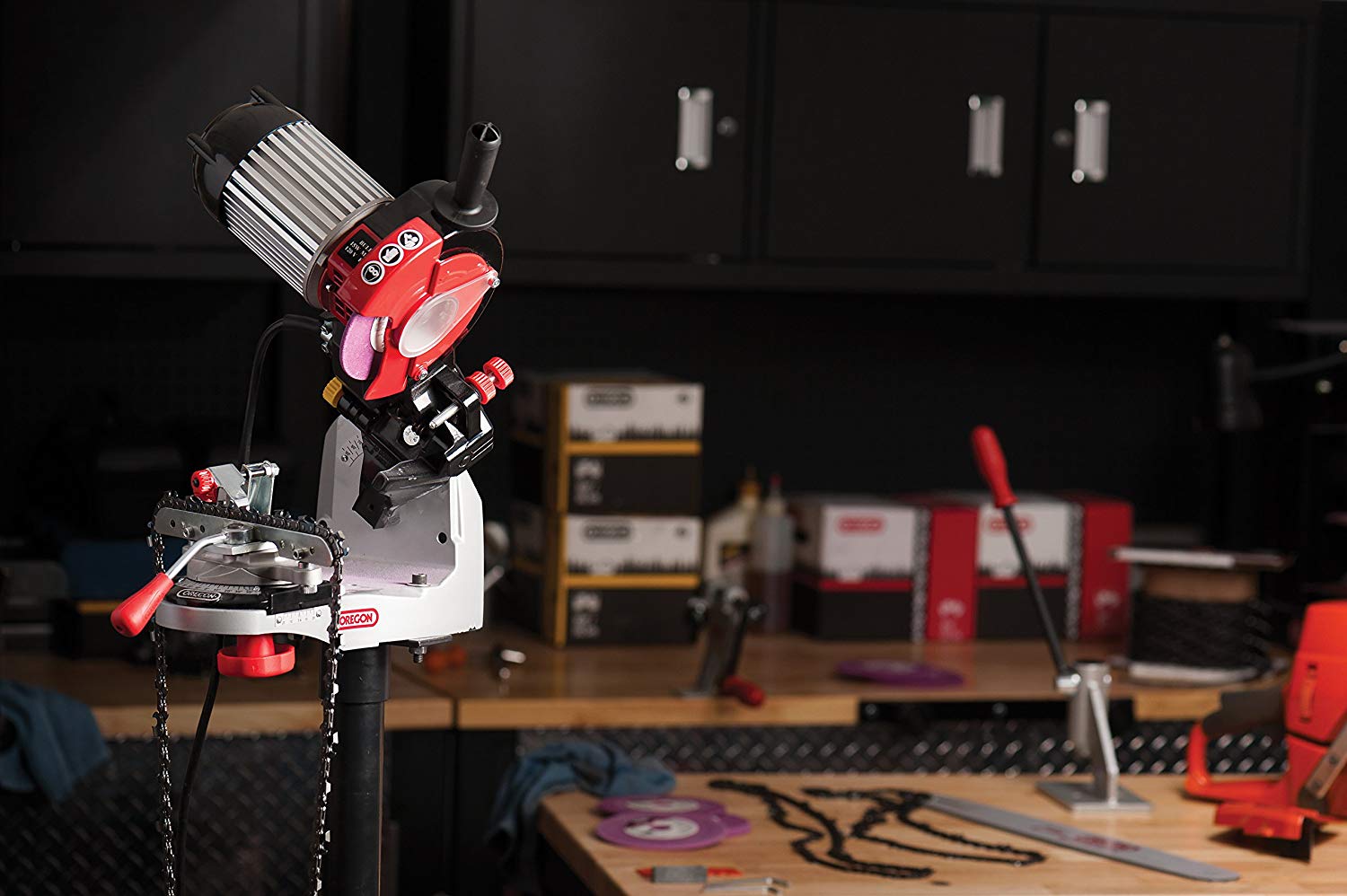
However, these Oregon sharpeners will cost about 3-4 times as much as the sharpeners listed above so depending on your budget it may or may not be an option for you.
Dremel, which is a common multi-tool brand also makes an attachment to sharpen chainsaw chains.
To learn more, check out our Dremel chainsaw sharpener review.
Chainsaw Maintenance - Bar and Oil
There's always been a long debate about using regular motor oil instead of traditional chainsaw bar oil.
It's always tempting to use motor oil because you probably have it on hand already.
However, will motor oil damage your chainsaw?
Just about every chainsaw user manual insists you use high quality chainsaw oil.
The theory behind this is that bar oil has a "high tack" additive that reduces the possibility of it slinging off as it travels along the bar.
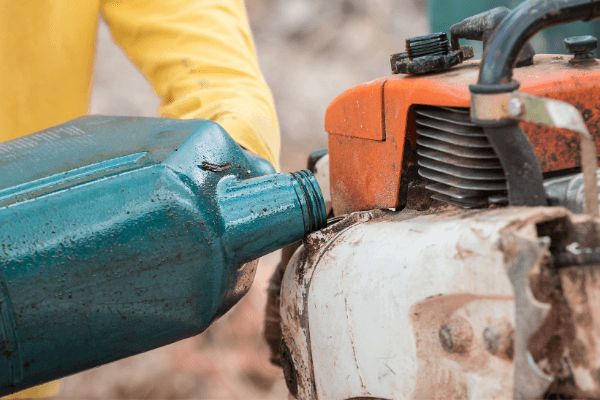
While the topic of using motor oil vs bar oil is always an interesting debate, no one believes you should use old, used motor oil inside your chainsaw.
Old oil contains microscopic pieces of metal and the viscosity has broken down meaning it will just sling off your chain and not do its job.
Speaking of oil, would you like to know the proper way to mix 2 cycle oil and gasoline to ensure your chainsaw is running at its fullest potential?
Check out this article that explains the best way to mix chainsaw gas.
Chainsaw Maintenance - Chainsaw Bar
As earlier discussed, proper chainsaw maintenance involves flipping your bar every time you sharpen the chain.
You should also file down any burrs that form at the outside ends of the bar near the track.
There are several reasons why you might want to learn how to measure a chainsaw bar.
For example, I own a Husqvarna 345 which according to the user manual can handle a 16'' or 18'' bar.
After purchasing the saw I immediately upgraded to the 18'' bar to accommodate larger logs.
One of the most frustrating things when you cutting firewood is a loose chain.
A loose chain can be very dangerous because the chain will continue to spin along the bar even after you let off the gas.
Don't worry......fixing a loose chain on your chainsaw is really easy. Read here to learn why your chainsaw chain keeps coming loose.
Choosing The Right Chainsaw - Chainsaw Maintenance
If you're in the market for a new chainsaw, it's important to ask yourself a simple question.
What do you plan on using the saw for?
If you heat with firewood and plan on cutting a lot of wood year after year, then you might want to consider our recommendation for the best chainsaws for cutting firewood.
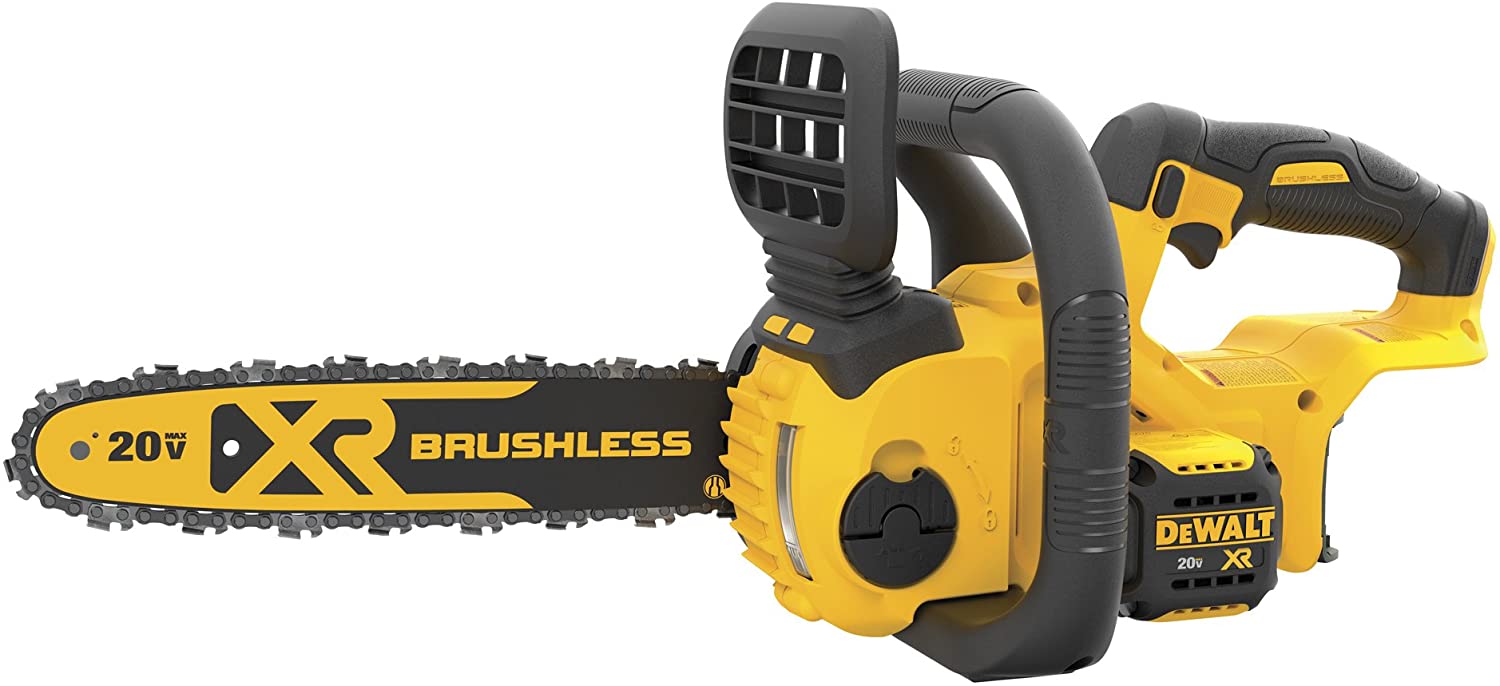
Or, if you only plan on using the chainsaw to occasionally cut a broken limb or cut some wood for a campfire, you might want to consider our recommendation for the best electric chainsaws or the best cheap chainsaws to help you save some money.
If you have a set budget, check out these recommendations for the best chainsaws under 200 dollars.
If you're looking for a "happy medium" between an expensive saw made for cutting large amounts of wood, and a small saw that you only use once in a while, consider our choices for the best homeowner chainsaws or the best small chainsaws.
What Size Chainsaw Do You Need?
There's a couple of different schools of thought when choosing the best sized chainsaw for your needs.
A saw with a longer bar prevents you from bending over at the waist, which in theory, is easier on your back.
However, a longer bar means a bigger saw which can be a lot heavier than a small saw with a shorter bar.
Most of us won't need a saw with a bar that's longer than 16 or 18 inches.
To make things easy, check out this article that explains the best 16 inch chainsaws and the best 18 inch chainsaws.
Do you struggle with pulling the starter cord on your chainsaw due to fatigue or injury?
Check out this article that details the best easy start chainsaw.
Chainsaw Maintenance - Overall
Although it sounds intimidating at first, proper chainsaw maintenance is actually pretty easy once you follow these guidelines and develop a routine.
Every saw is different, but overall they all function in a similar way.
Your chainsaw is not only an investment, it's also an incredibly dangerous machine you're holding in your hands.
Remember, a well maintained chainsaw not only runs better.......it's safer, which is why chainsaw maintenance is so important!

About the Author
Obsessed with firewood, Nick is behind over 350+ of Firewood For Life's articles, as well as countless reviews, guides and YouTube videos to help readers like you reduce heating costs and create the perfect fire.
